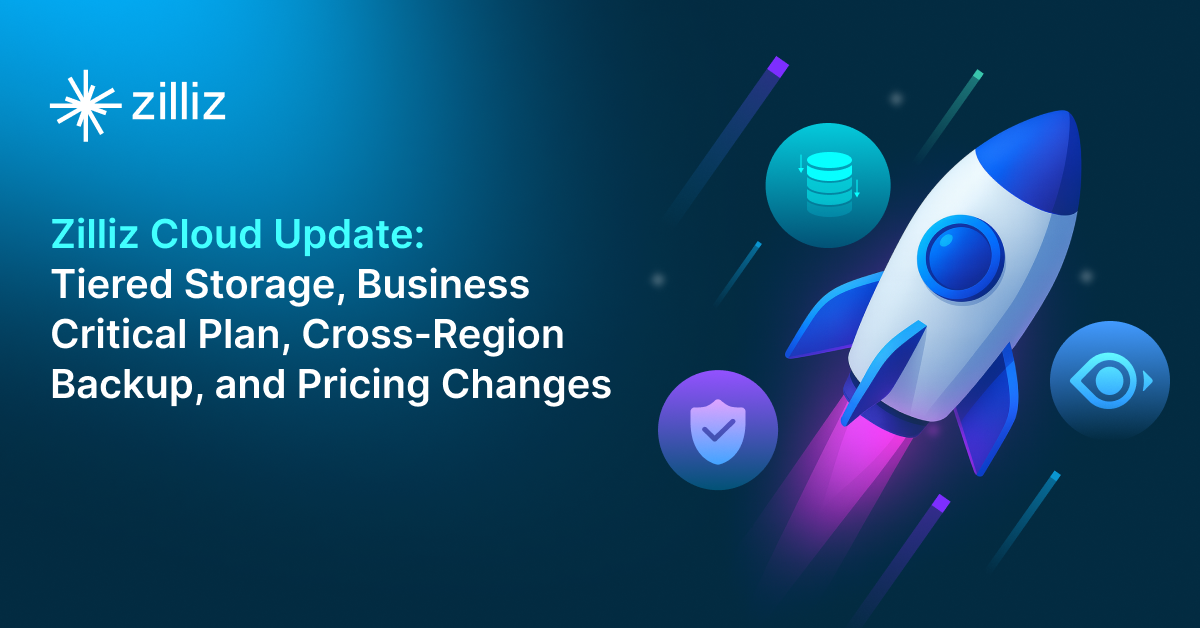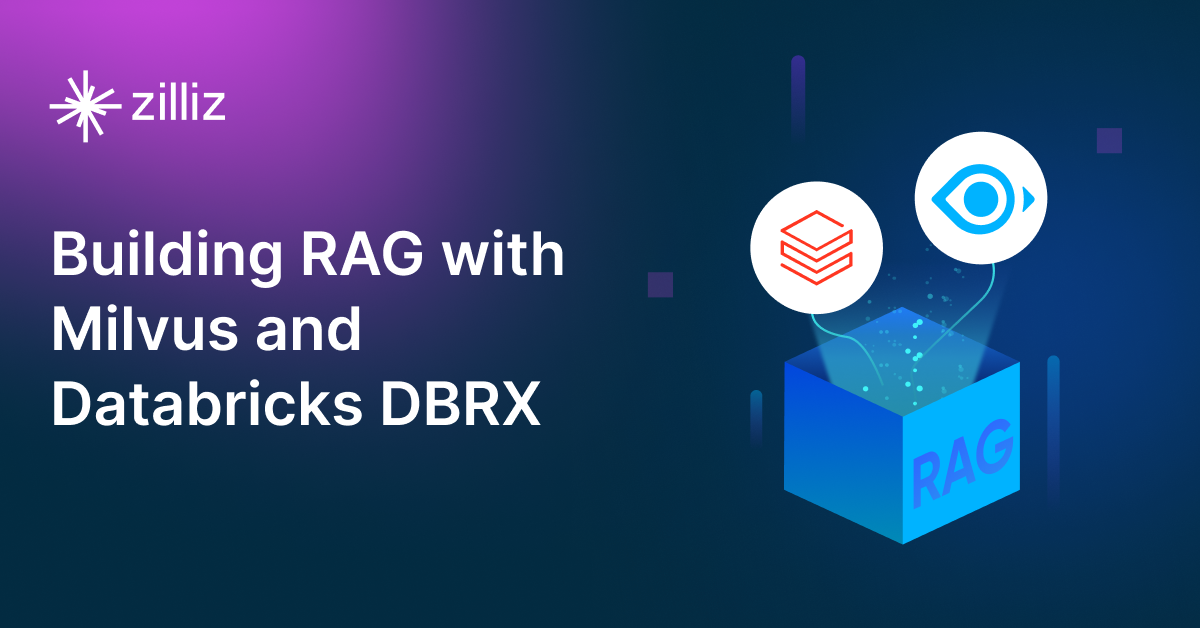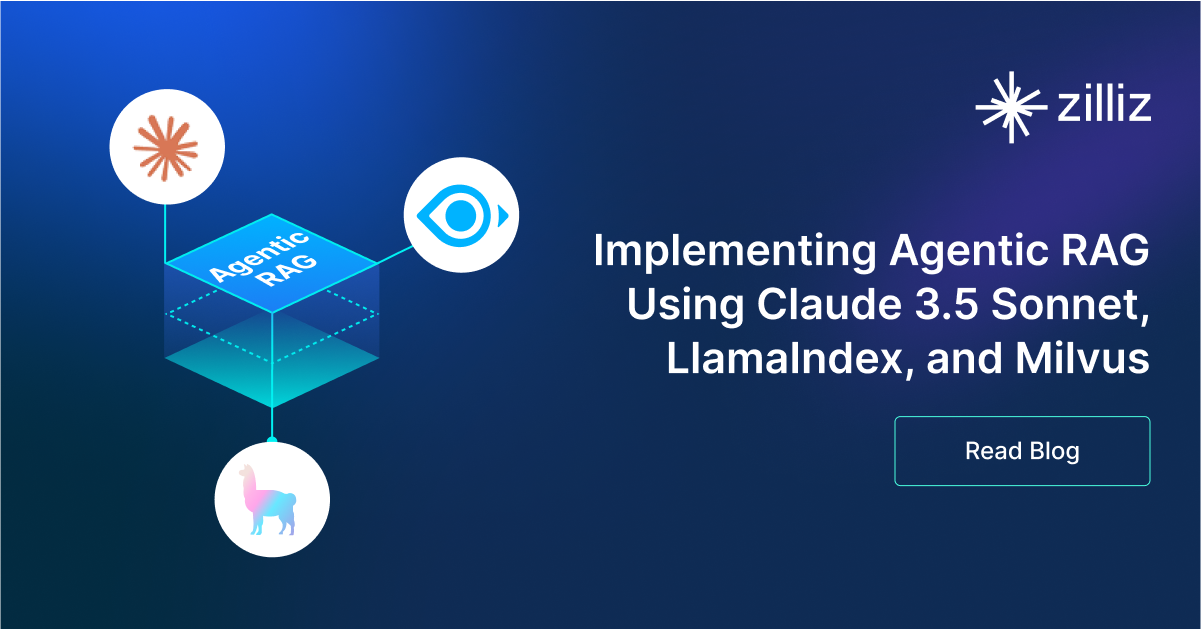Build RAG Chatbot with LangChain, LangChain vector store, NVIDIA Qwen2.5-7B-Instruct, and Google Vertex AI text-embedding-004
Introduction to RAG
Retrieval-Augmented Generation (RAG) is a game-changer for GenAI applications, especially in conversational AI. It combines the power of pre-trained large language models (LLMs) like OpenAI’s GPT with external knowledge sources stored in vector databases such as Milvus and Zilliz Cloud, allowing for more accurate, contextually relevant, and up-to-date response generation. A RAG pipeline usually consists of four basic components: a vector database, an embedding model, an LLM, and a framework.
Key Components We'll Use for This RAG Chatbot
This tutorial shows you how to build a simple RAG chatbot in Python using the following components:
- LangChain: An open-source framework that helps you orchestrate the interaction between LLMs, vector stores, embedding models, etc, making it easier to integrate a RAG pipeline.
- LangChain in-memory vector store: an in-memory, ephemeral vector store that stores embeddings in-memory and does an exact, linear search for the most similar embeddings. The default similarity metric is cosine similarity, but can be changed to any of the similarity metrics supported by ml-distance. It is intended for demos and does not yet support ids or deletion. (If you want a much more scalable solution for your apps or even enterprise projects, we recommend using Zilliz Cloud, which is a fully managed vector database service built on the open-source Milvusand offers a free tier supporting up to 1 million vectors.)
- NVIDIA Qwen2.5-7B-Instruct: This advanced language model is designed for instruction-following tasks, leveraging the capabilities of 7 billion parameters to comprehend and generate diverse text responses. Its strengths lie in natural language understanding and contextual adaptability, making it ideal for applications in tutoring, conversational agents, and automated content generation across various domains.
- Google Vertex AI text-embedding-004: This model specializes in creating high-quality text embeddings for diverse natural language processing tasks. Its strength lies in capturing semantic meaning and relationships effectively, making it suitable for applications such as semantic search, clustering, and recommendation systems. Ideal for developers seeking to enhance AI-driven insights from textual data.
By the end of this tutorial, you’ll have a functional chatbot capable of answering questions based on a custom knowledge base.
Note: Since we may use proprietary models in our tutorials, make sure you have the required API key beforehand.
Step 1: Install and Set Up LangChain
%pip install --quiet --upgrade langchain-text-splitters langchain-community langgraph
Step 2: Install and Set Up NVIDIA Qwen2.5-7B-Instruct
pip install -qU "langchain-nvidia-ai-endpoints"
import getpass
import os
if not os.environ.get("NVIDIA_API_KEY"):
os.environ["NVIDIA_API_KEY"] = getpass.getpass("Enter API key for NVIDIA: ")
from langchain.chat_models import init_chat_model
llm = init_chat_model("qwen/qwen2.5-7b-instruct", model_provider="nvidia")
Step 3: Install and Set Up Google Vertex AI text-embedding-004
pip install -qU langchain-google-vertexai
from langchain_google_vertexai import VertexAIEmbeddings
embeddings = VertexAIEmbeddings(model="text-embedding-004")
Step 4: Install and Set Up LangChain vector store
pip install -qU langchain-core
from langchain_core.vectorstores import InMemoryVectorStore
vector_store = InMemoryVectorStore(embeddings)
Step 5: Build a RAG Chatbot
Now that you’ve set up all components, let’s start to build a simple chatbot. We’ll use the Milvus introduction doc as a private knowledge base. You can replace it with your own dataset to customize your RAG chatbot.
import bs4
from langchain import hub
from langchain_community.document_loaders import WebBaseLoader
from langchain_core.documents import Document
from langchain_text_splitters import RecursiveCharacterTextSplitter
from langgraph.graph import START, StateGraph
from typing_extensions import List, TypedDict
# Load and chunk contents of the blog
loader = WebBaseLoader(
web_paths=("https://milvus.io/docs/overview.md",),
bs_kwargs=dict(
parse_only=bs4.SoupStrainer(
class_=("doc-style doc-post-content")
)
),
)
docs = loader.load()
text_splitter = RecursiveCharacterTextSplitter(chunk_size=1000, chunk_overlap=200)
all_splits = text_splitter.split_documents(docs)
# Index chunks
_ = vector_store.add_documents(documents=all_splits)
# Define prompt for question-answering
prompt = hub.pull("rlm/rag-prompt")
# Define state for application
class State(TypedDict):
question: str
context: List[Document]
answer: str
# Define application steps
def retrieve(state: State):
retrieved_docs = vector_store.similarity_search(state["question"])
return {"context": retrieved_docs}
def generate(state: State):
docs_content = "\n\n".join(doc.page_content for doc in state["context"])
messages = prompt.invoke({"question": state["question"], "context": docs_content})
response = llm.invoke(messages)
return {"answer": response.content}
# Compile application and test
graph_builder = StateGraph(State).add_sequence([retrieve, generate])
graph_builder.add_edge(START, "retrieve")
graph = graph_builder.compile()
Test the Chatbot
Yeah! You've built your own chatbot. Let's ask the chatbot a question.
response = graph.invoke({"question": "What data types does Milvus support?"})
print(response["answer"])
Example Output
Milvus supports various data types including sparse vectors, binary vectors, JSON, and arrays. Additionally, it handles common numerical and character types, making it versatile for different data modeling needs. This allows users to manage unstructured or multi-modal data efficiently.
Optimization Tips
As you build your RAG system, optimization is key to ensuring peak performance and efficiency. While setting up the components is an essential first step, fine-tuning each one will help you create a solution that works even better and scales seamlessly. In this section, we’ll share some practical tips for optimizing all these components, giving you the edge to build smarter, faster, and more responsive RAG applications.
LangChain optimization tips
To optimize LangChain, focus on minimizing redundant operations in your workflow by structuring your chains and agents efficiently. Use caching to avoid repeated computations, speeding up your system, and experiment with modular design to ensure that components like models or databases can be easily swapped out. This will provide both flexibility and efficiency, allowing you to quickly scale your system without unnecessary delays or complications.
LangChain in-memory vector store optimization tips
LangChain in-memory vector store is just an ephemeral vector store that stores embeddings in-memory and does an exact, linear search for the most similar embeddings. It has very limited features and is only intended for demos. If you plan to build a functional or even production-level solution, we recommend using Zilliz Cloud, which is a fully managed vector database service built on the open-source Milvus and offers a free tier supporting up to 1 million vectors.)
NVIDIA Qwen2.5-7B-Instruct Optimization Tips
To optimize the NVIDIA Qwen2.5-7B-Instruct model in a Retrieval-Augmented Generation (RAG) setup, consider implementing mixed precision training to reduce memory footprint and accelerate training times. Fine-tune the model on domain-specific data to enhance relevancy in generated responses while adjusting the retrieval component's cosine similarity threshold to balance precision and recall. Utilize an efficient caching mechanism to store frequently accessed data, ensuring low-latency responses. Experiment with varying the number of retrievals based on query complexity, and leverage batch processing during inference to maximize throughput. Finally, keep an eye on hardware utilization metrics to adjust configurations and achieve optimal performance.
Google Vertex AI text-embedding-004 optimization tips
Google Vertex AI text-embedding-004 offers high-quality embeddings suitable for a wide range of RAG applications. To improve retrieval efficiency, reduce redundancy in input text by preprocessing data and focusing on key concepts and relevant context. For large-scale deployments, utilize batch processing to generate embeddings in parallel, reducing latency. Optimize search performance by implementing hybrid search strategies that combine traditional keyword matching with dense vector similarity. Fine-tune temperature settings to balance between creativity and precision, and adjust the model’s top-k and top-p parameters to control the variability of results. Cache embeddings for high-demand queries to reduce unnecessary processing, and refresh embeddings periodically to maintain relevance as new data is ingested.
By implementing these tips across your components, you'll be able to enhance the performance and functionality of your RAG system, ensuring it’s optimized for both speed and accuracy. Keep testing, iterating, and refining your setup to stay ahead in the ever-evolving world of AI development.
RAG Cost Calculator: A Free Tool to Calculate Your Cost in Seconds
Estimating the cost of a Retrieval-Augmented Generation (RAG) pipeline involves analyzing expenses across vector storage, compute resources, and API usage. Key cost drivers include vector database queries, embedding generation, and LLM inference.
RAG Cost Calculator is a free tool that quickly estimates the cost of building a RAG pipeline, including chunking, embedding, vector storage/search, and LLM generation. It also helps you identify cost-saving opportunities and achieve up to 10x cost reduction on vector databases with the serverless option.
 Calculate your RAG cost
Calculate your RAG cost
What Have You Learned?
By diving into this tutorial, you’ve unlocked the magic of building a RAG system from the ground up! You learned how LangChain acts as the glue that ties everything together—orchestrating workflows, managing data flows, and seamlessly connecting your vector database, embedding model, and LLM. The LangChain Vector Store became your powerhouse for lightning-fast semantic search, turning unstructured data into retrievable knowledge. Meanwhile, Google’s Vertex AI text-embedding-004 transformed text into rich numerical representations, ensuring your system understands context and nuance. And let’s not forget the star of the show: NVIDIA’s Qwen2.5-7B-Instruct LLM, which brought human-like reasoning to your application, generating responses that feel natural and informed. Together, these tools form a pipeline that retrieves precise information and crafts intelligent answers, making your system both dynamic and scalable. You even picked up pro tips for optimizing costs and latency, plus a handy free RAG cost calculator to keep your projects budget-friendly!
Now that you’ve seen how these pieces fit, imagine what’s next! You’ve got the blueprint to build systems that answer questions, summarize content, or even act as AI-powered assistants. The skills you’ve gained aren’t just theoretical—they’re a launchpad for real-world innovation. Whether you’re tweaking embeddings for better accuracy, experimenting with different LLMs, or scaling your vector database for massive datasets, the possibilities are endless. So fire up your IDE, experiment fearlessly, and let your creativity run wild. The future of intelligent applications is in your hands—go build something amazing and share it with the world! 🚀
Further Resources
🌟 In addition to this RAG tutorial, unleash your full potential with these incredible resources to level up your RAG skills.
- How to Build a Multimodal RAG | Documentation
- How to Enhance the Performance of Your RAG Pipeline
- Graph RAG with Milvus | Documentation
- How to Evaluate RAG Applications - Zilliz Learn
- Generative AI Resource Hub | Zilliz
We'd Love to Hear What You Think!
We’d love to hear your thoughts! 🌟 Leave your questions or comments below or join our vibrant Milvus Discord community to share your experiences, ask questions, or connect with thousands of AI enthusiasts. Your journey matters to us!
If you like this tutorial, show your support by giving our Milvus GitHub repo a star ⭐—it means the world to us and inspires us to keep creating! 💖
- Introduction to RAG
- Key Components We'll Use for This RAG Chatbot
- Step 1: Install and Set Up LangChain
- Step 2: Install and Set Up NVIDIA Qwen2.5-7B-Instruct
- Step 3: Install and Set Up Google Vertex AI text-embedding-004
- Step 4: Install and Set Up LangChain vector store
- Step 5: Build a RAG Chatbot
- Optimization Tips
- RAG Cost Calculator: A Free Tool to Calculate Your Cost in Seconds
- What Have You Learned?
- Further Resources
- We'd Love to Hear What You Think!
Content
Vector Database at Scale
Zilliz Cloud is a fully-managed vector database built for scale, perfect for your RAG apps.
Try Zilliz Cloud for Free


